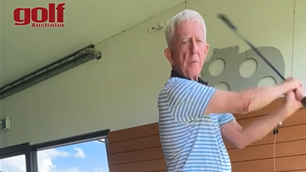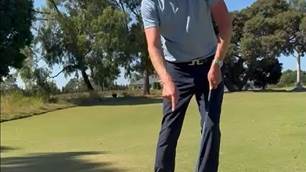Over the years I have been asked many times why a successful Tour pro would contemplate changing to a cross-handed putting grip.
Over the years I have been asked many times why a successful Tour pro would contemplate changing to a cross-handed putting grip.The simple answer is that the cross-handed putting grip offers a real benefit to players who are struggling to make short-range putts. One of the latest players to switch – reigning Australian Masters champion Stuart Appleby – adopted the grip early last year. This change came on the back of a 2009 season riddled with poor results, especially on the greens. In 2009, Appleby was ranked 145th in putts per round on the PGA Tour and a lowly 182nd for putts made between five and ten feet with just 46.99 percent of those putts finding the bottom of the cup. Last year, Appleby, using the cross-handed grip, improved to 37th in putts per round. He increased his putts made from five to ten feet to 52.96 percent. As a result, his scoring average dropped nearly a full stroke per round.
The cross-handed grip has several benefits that obviously have assisted Appleby.
The biggest advantage the cross-handed grip offers is to get your shoulders lined up more square to the target. Once you move the left hand low, your left shoulder will correspond by moving out, and squaring up to the putting line. This is great for short-range putts.
The second major benefit of this grip is that it keeps the left wrist straight through impact and prevents any hinging. Ideally, all you need to do is to keep the back of the left hand facing the target for as long as possible through impact. This sees the putter shaft become an extension of your left hand (pictured) and the back of the left hand becomes an indicator of whether the putter face is square or not.
If you are having trouble making short-range putts, give this grip a try. However, if it feels too uncomfortable, even after a good practice session, it may not be right for you.
Related Articles

Video Lesson: Hear the swoosh past the ball

Playing From The Tips Ep.106: Texas Open, LIV Miami & LPGA Match Play













